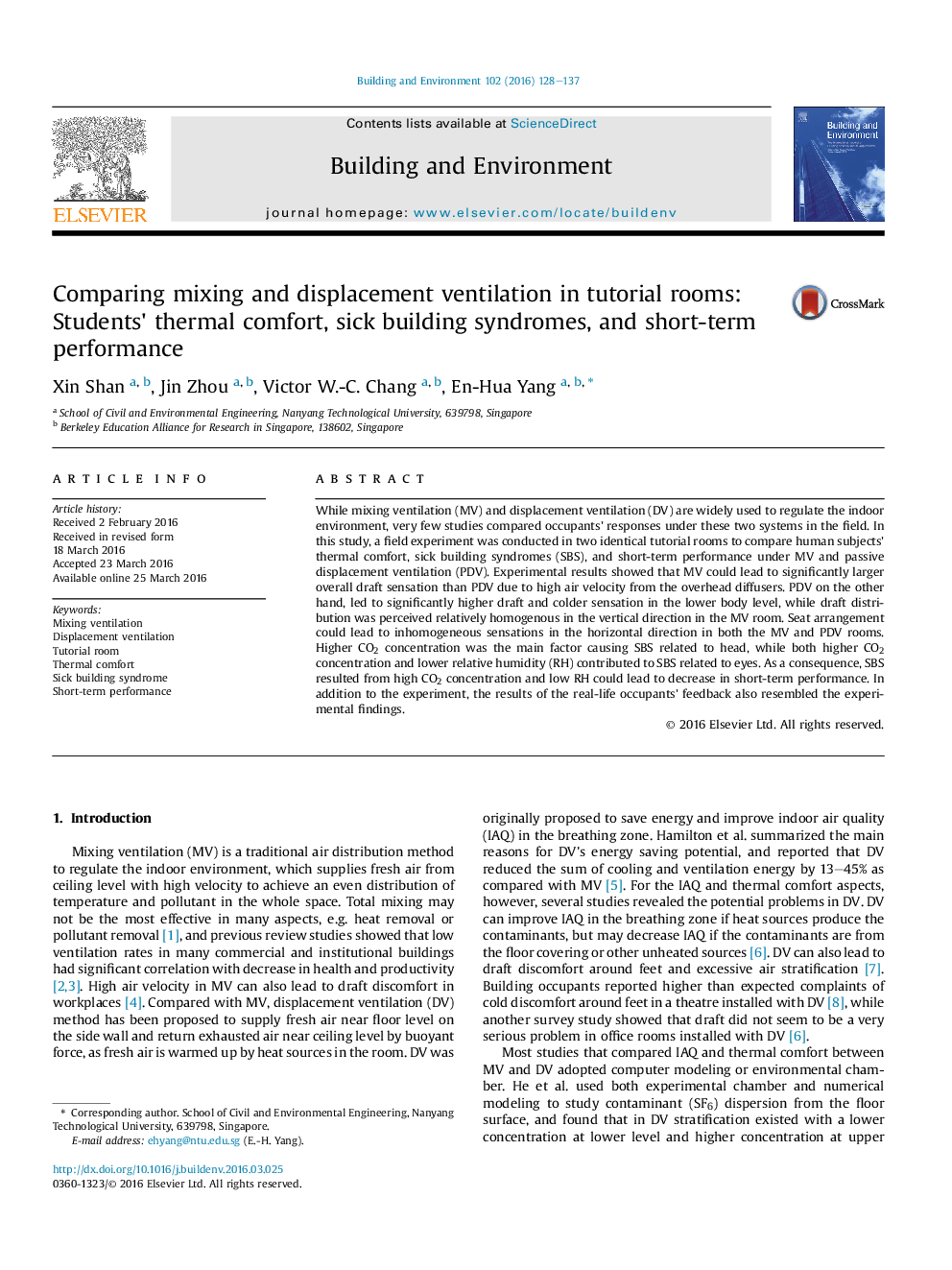| Article ID | Journal | Published Year | Pages | File Type |
|---|---|---|---|---|
| 6699288 | Building and Environment | 2016 | 10 Pages |
Abstract
While mixing ventilation (MV) and displacement ventilation (DV) are widely used to regulate the indoor environment, very few studies compared occupants' responses under these two systems in the field. In this study, a field experiment was conducted in two identical tutorial rooms to compare human subjects' thermal comfort, sick building syndromes (SBS), and short-term performance under MV and passive displacement ventilation (PDV). Experimental results showed that MV could lead to significantly larger overall draft sensation than PDV due to high air velocity from the overhead diffusers. PDV on the other hand, led to significantly higher draft and colder sensation in the lower body level, while draft distribution was perceived relatively homogenous in the vertical direction in the MV room. Seat arrangement could lead to inhomogeneous sensations in the horizontal direction in both the MV and PDV rooms. Higher CO2 concentration was the main factor causing SBS related to head, while both higher CO2 concentration and lower relative humidity (RH) contributed to SBS related to eyes. As a consequence, SBS resulted from high CO2 concentration and low RH could lead to decrease in short-term performance. In addition to the experiment, the results of the real-life occupants' feedback also resembled the experimental findings.
Keywords
Related Topics
Physical Sciences and Engineering
Energy
Renewable Energy, Sustainability and the Environment
Authors
Xin Shan, Jin Zhou, Victor W.-C. Chang, En-Hua Yang,
